Courtney and the Cancer She Never Planned For
Courtney has always been a planner, even as a child. Growing up in Gainesville, she produced pretend weddings for her sister and neighborhood friends, ensuring…

Update your location to show providers, locations, and services closest to you.
A mammogram is an x-ray picture of the breasts. It is used to find breast tumors and cancer.
Mammography; Breast cancer - mammography; Breast cancer - screening mammography; Breast lump - mammogram; Breast tomosynthesis; 3D mammography; 2D mammography
You will be asked to undress from the waist up. You will be given a gown to wear. Depending on the type of equipment used and your physical condition, you will sit or stand.
One breast at a time is rested on a flat surface that contains the x-ray plate. A device called a compressor will be pressed firmly against the breast to help flatten the breast tissue. This enables the radiologist to make a better evaluation of your breasts.
The x-ray pictures are taken from several angles. You may be asked to hold your breath as each picture is taken.
You may be asked to come back at a later date for more mammogram images. This does not always mean you have breast cancer. Your health care provider may simply need to recheck an area that could not be clearly seen on the first test.
TYPES OF MAMMOGRAPHY
Traditional mammography uses film, similar to routine x-rays.
Digital mammography is the most common technique:
Three-dimensional (3D) mammography is a type of digital mammography.
DO NOT use deodorant, perfume, powders, or ointments under your arms or on your breasts on the day of the mammogram. These substances may hide a portion of the images. Remove all jewelry from your neck and chest area.
Tell your provider and the x-ray technologist if you are pregnant or breastfeeding, or if you've had a breast biopsy.
The compressor surfaces may feel cold. When the breast is pressed down, you may have some pain. This needs to be done to get good quality images.
When and how often to have a screening mammogram is a choice you must make. Different expert groups do not fully agree on the best timing for this test.
Before having a mammogram, talk to your provider about the pros and cons of having the test. Ask about:
Mammography is performed to screen women to detect early breast cancer when it is more likely to be cured. Mammography is generally recommended for:
Mammography is also used to:
Breast tissue that shows no signs of a mass or suspicious looking calcifications is considered normal.
Most abnormal findings on a screening mammogram turn out to be benign (not cancer) or nothing to worry about. New findings or changes must be further evaluated.
A radiology doctor (radiologist) may see the following types of findings on a mammogram:
At times, the following tests are also needed to further examine mammogram findings:
Comparing your current mammogram to your past mammograms helps the radiologist tell whether you had an abnormal finding in the past and whether it has changed.
When mammogram or ultrasound results look suspicious, a biopsy is done to test the tissue and see if it is cancerous. Types of biopsies include:
The level of radiation is low and any risk from mammography is very low. If you are pregnant and need to have an abnormality checked, your belly area will be covered and protected by a lead apron.
Routine screening mammography is not done during pregnancy or while breastfeeding.

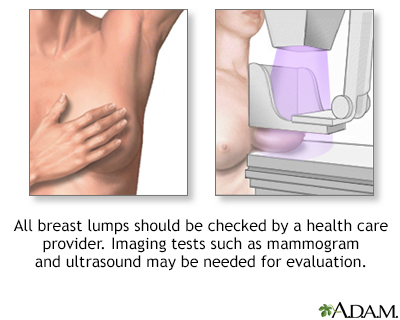
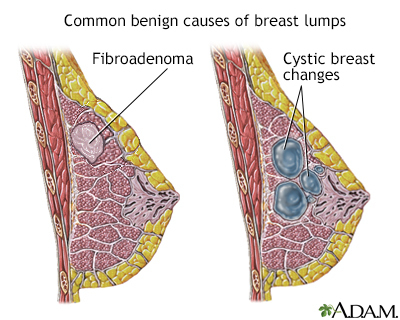
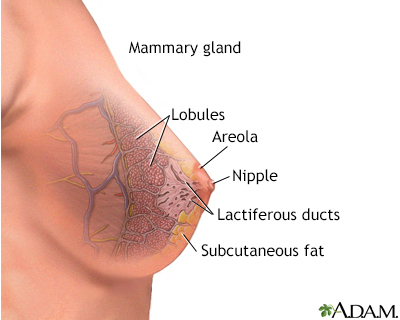
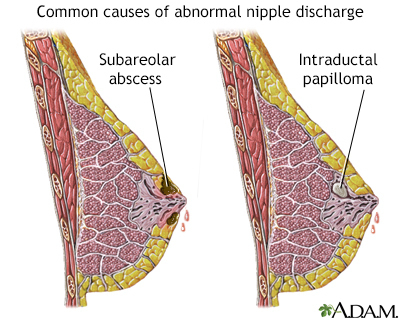
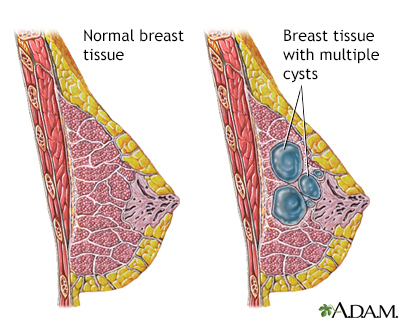
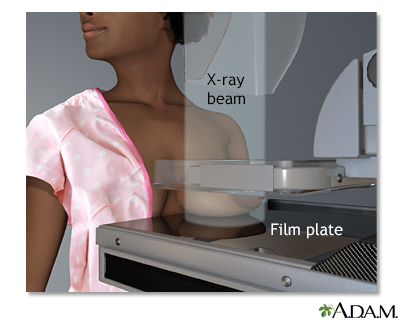
Henry NL, Shah PD, Haider I, Freer PE, Jagsi R, Sabel MS. Cancer of the breast. In: Niederhuber JE, Armitage JO, Kastan MB, Doroshow JH, Tepper JE, eds. Abeloff's Clinical Oncology. 6th ed. Philadelphia, PA: Elsevier; 2020:chap 88.
American Cancer Society website. American Cancer Society recommendations for the early detection of breast cancer. www.cancer.org/cancer/breast-cancer/screening-tests-and-early-detection/american-cancer-society-recommendations-for-the-early-detection-of-breast-cancer.html. Updated January 14, 2022. Accessed May 25, 2022.
American College of Obstetricians and Gynecologists (ACOG) website. ACOG Practice Bulletin: Breast cancer risk assessment and screening in average-risk women. No. 179, July 2017. www.acog.org/clinical/clinical-guidance/practice-bulletin/articles/2017/07/breast-cancer-risk-assessment-and-screening-in-average-risk-women. Reaffirmed 2021. Accessed May 25, 2022.
National Cancer Institute website. Breast cancer screening (PDQ) - health professional version. www.cancer.gov/types/breast/hp/breast-screening-pdq. Updated February 10, 2022. Accessed May 25, 2022.
Siu AL; US Preventive Services Task Force. Screening for breast cancer: US Preventive Services Task Force recommendation statement. Ann Intern Med. 2016;164(4):279-296. PMID: 26757170 pubmed.ncbi.nlm.nih.gov/26757170/.


Courtney has always been a planner, even as a child. Growing up in Gainesville, she produced pretend weddings for her sister and neighborhood friends, ensuring…

The smell of pumpkin spice is in the air, and there are hints of cooler weather ahead. While we don’t get the treat of seeing the leaves change colors in…
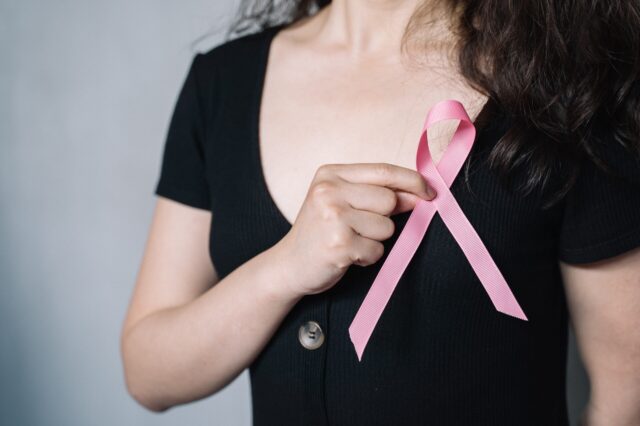
If you’re a woman at least 75 years of age, keep getting your mammograms. That’s the main message from findings that shed new light on the topic. Since 2009, guidelines about when to stop breast...
If you’re a woman at least 75 years of age, keep getting your mammograms. That’s the main message from recent findings that shed new light on the topic. Since 2009, guidelines about when to stop...
Overweight women may need more frequent mammograms, new research suggests. Women with a higher body mass index can be at a heightened risk of not having their breast tumor detected until it has...